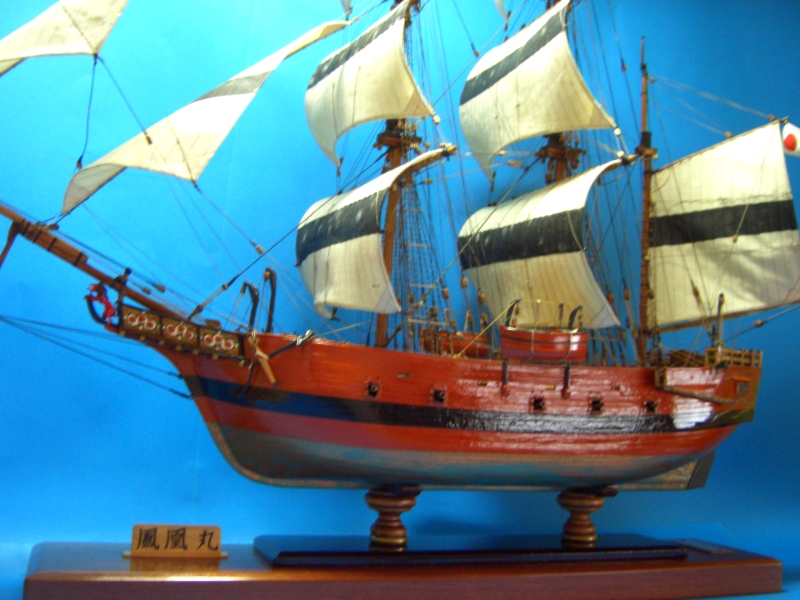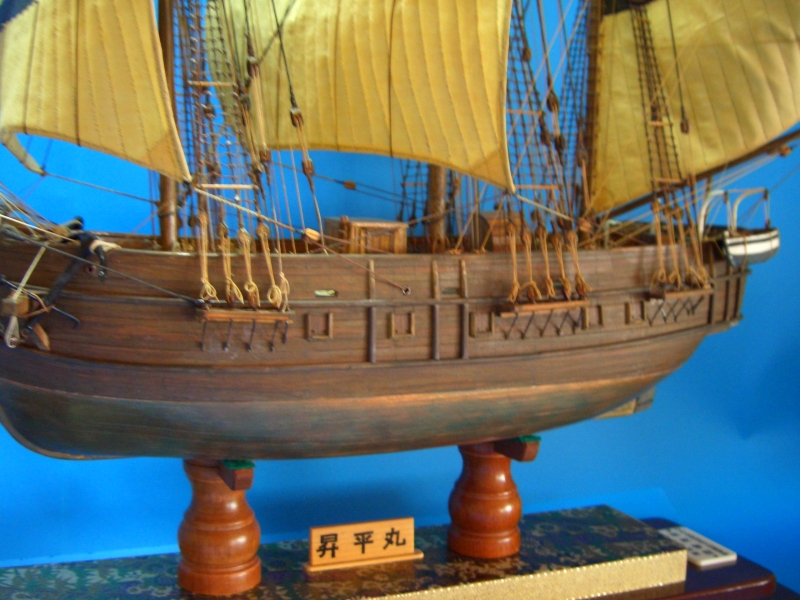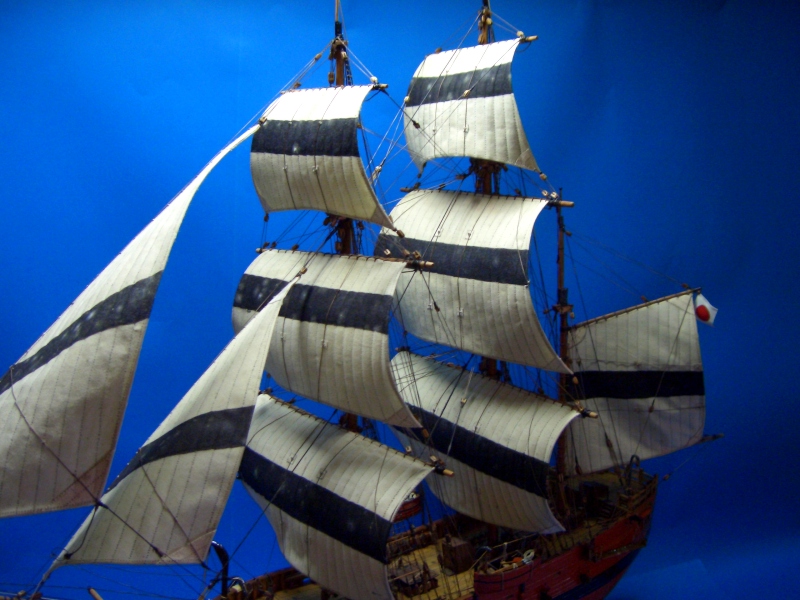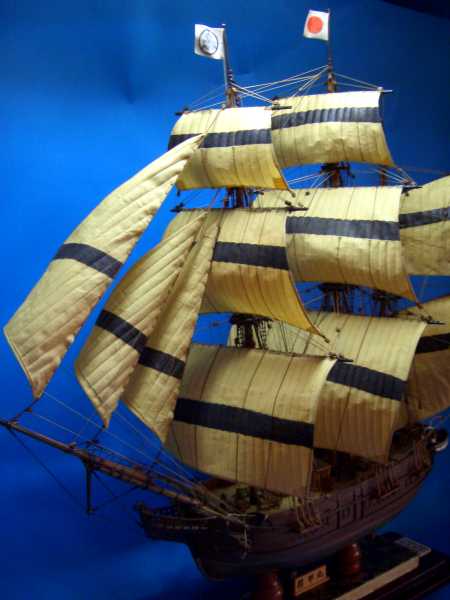|
日本人が造った 幕末の洋式帆船 |
Western-style sailing ships at the end of the Edo period Built by the Japanese |
|---|---|
|
|
Even before the arrival of Matthew Calbraith Perry, there had been incidents of Russian ships sailing south in the seas around Japan, and when Perry arrived in 1853 and demanded the opening of the country, the shogunate and the various domains were forced to build large ships as a sea defense measure. In September of the same year, after Perry said he'd be back next year, the shogunate lifted "the ban on the construction of large ships other than military ships," which had been in place since 1638, and began to study shipbuilding and navigation technology, which had been lagging behind due to the 200 years of national seclusion. They translated Dutch books, observed foreign ships, and began to build Western-style sailing ships with the unique efforts of the Japanese. The following are some of those ships: H?? Maru built by the Shogunate Shohei Maru built by Nariakira Shimazu of Satsuma Domain Kyokujitsu Maru built by Nariaki Tokugawa of Mito Domain Kaisei Maru built by the Sendai clan They invested a huge amount of money, intelligence, and technology in the construction of these ships and overcame many difficulties to complete them. The effort and technology that went into the construction of these Western-style sailing ships in such a short period of time is a cultural asset to be proud of. Mr. Hideyuki Okazaki, a model maker of sailing ships, regretted that such a precious history of Japanese efforts was buried, so he has been making models of those ships. When Mr. Okazaki agreed to make a model of the USS Powhatan, he also surrendered models of two ships he had already made, the H?? Maru and the Shohei Maru, to Tozenji. |
| 幕府が造った日本最初の洋式軍艦 鳳凰丸 |
Japan's
first Western-style warship built by the Shogunate Hooh Maru |
|
約600トン 長さ約38m 幅約9m |
Weight: approx. 600 tons Length: approx. 38 m Width: 9 m Completed on May 10, 1854, by Saburosuke Nakajima, a yoriki (a kind of field supervisor) from Uraga, under orders from the Shogunate. Since there was no paint in Japan at the time, it was finished with lacquer. The black horizontal lines on the sails represent the ships of the Shogunate. Model made by Hideyuki Okazaki, owned by Tozenji Temple |
 |
|
| 薩摩藩が造った洋式軍艦 昌平丸 |
Shohei
Maru Western-style warship built by the Satsuma Clan |
|
約370トン 長さ約31m 幅約7m |
Weight: approx. 370 tons Length: 31 m Width: 7 m Built by the Satsuma Clan and completed on December 12, 1854 (Kaei 7). First named "昇平丸," then renamed "昌平丸" after being presented to the Shogunate. Both are pronounced as "Shohei Maru," but the Kanji characters used are different. Model made by Hideyuki Okazaki, owned by Tozenji Temple |
 |
Kaishu Katsu said that the H?? Maru and the Shohei Maru were "only
made to resemble Western ships in appearance. Their construction was weak
and they were not fast. They were useless and bad ships. This assessment
became a common belief until later, and was the reason why the first Western-style
sailing ship built solely by Japanese was not taken seriously. Recent research has revealed that the Hooh Maru, Shohei Maru, and Kyokujitsu Maru were not just for the exterior, but were practical ships with full-scale construction inside the hull. |
|
勝海舟は、鳳凰丸や旭日丸を「外観を西洋船に似せただけ。造りは脆弱(ぜいじゃく)で速度も出ない。役に立たない悪船だった」と酷評した。その評価がのちまでの通説となり、日本人だけで造った初めての洋式帆船がかえりみられない原因となった。 |

